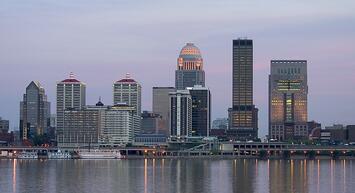
Urban advocates have long sought more federal money for cities. Now, they are getting it – bigtime. The aid being provided to cities under the coronavirus relief act represents a major test of the thesis that federal aid can be transformative for urban America. Cities should make the most of this opportunity. If they can use these funds to move the needle on substantial change, this would create a strong case for future aid. But if the money is simply frittered away, there’s no reason to expect such extensive help in the future.
The American Rescue Plan contains $350 billion in funding for state and local governments. This includes $45.6 billion for large metropolitan areas. The quantity of funds for these bigger metro areas is significant. Birmingham, Ala., is getting $141 million, Phoenix nearly $400 million, Chicago a bit less than $2 billion.
These are very large sums, particularly when county-level funding is also taken into account. In the merged government of Louisville-Jefferson County, Ky., the “city” is collecting $240 million, plus another $149 million in “county” funding, a bit less than $400 million total. The independent city of St. Louis is getting almost $500 million.
While the rules around how this money can be spent are not entirely clear, there is no mistaking the scope of the grants. Louisville’s annual budget is about $1 billion. That means its allocation is equivalent to 40 percent of its entire annual budget.
It is imperative that cities use this money to produce tangible and material benefits. The all too real danger is that instead it will be wasted. An example is excessive “state of good repair” spending on public transit. The highly respected global transit analyst Alon Levy has described state of good repair as “a racket permitting agencies to spend vast sums of money with nothing to show for it.”
It is very possible that cities will end up spreading their funding across a variety of programs such that billions of dollars are spent, but the material impact is limited, either in physical improvements or moving the needle on social or economic progress.
Read the rest of this piece at Heartland Intelligence.
Aaron M. Renn is an opinion-leading urban analyst, consultant, speaker and writer on a mission to help America’s cities and people thrive and find real success in the 21st century. He focuses on urban, economic development and infrastructure policy in the greater American Midwest. He also regularly contributes to and is cited by national and global media outlets, and his work has appeared in many publications, including the The Guardian, The New York Times and The Washington Post.
Photo credit: The Pug Father, via Flickr under CC 2.0 License.












